Resources
This carefully curated collection of resources will help you find packages and learning resources to help you on your R journey.

What does deprecated mean? Package lifecycle and the process of deprecation
This content describes the lifecycle stages of the tidyverse ecosystem, including stable, deprecated, superseded, and experimental stages, mainly as they apply to functions. It outlines how the stages affect the usability and changes in functions, with a focus on preventing and managing breaking changes. Emphasis is placed on ensuring code robustness by careful use of functions according to their intended effects. The content also addresses the gradual deprecation process, which provides warnings and guidance for replacing outdated functions, and introduces the 'lifecycle' package for managing these transitions.
Go to Resource
What does deprecated mean? Package lifecycle and the process of deprecation. - YouTube
This YouTube video provides an explanation of the meaning of 'deprecated' and discusses the package lifecycle and the process of deprecation.
Go to Resource
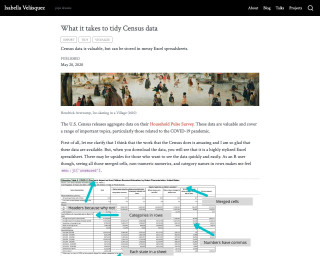
What is Takes to Tidy Census Data
This article explains the process of tidying Census data using R and tidyverse packages.
Go to Resource
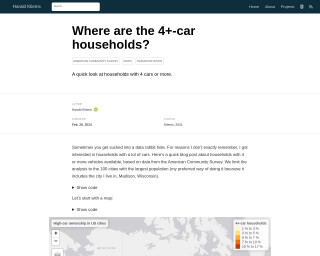
Where are the 4+-car households?
Harald Kliems investigates the prevalence of 4+-car households in the 100 most populous US cities using data from the American Community Survey. The blog post highlights the spatial distribution of such households and contrasts the top and bottom ten cities in terms of the percentage of 4+-car ownership. Key R packages used in the analysis include tidyverse, tidycensus, tigris, gt, and tmap. This examination into the facets of American car ownership is accompanied by visualizations such as maps and tables, enabling deeper insights into the data.
Go to Resource

Which names that are also names of countries are most common?
Simon P. Couch's blog post investigates which names that are also names of countries are most popular in the United States from 1880 to 2017. The post details the process of using R and packages like 'babynames' and 'countrycode' to filter and analyze baby name data. It offers a glimpse into the results, revealing the top country-names and their trends over time. Readers are encouraged to guess the most common names before seeing the data-driven answer. The post concludes with interesting visualizations showing the historical trends for the top country-names.
Go to Resource
Why R? Webinar 037 - D. Gohel - Tabular reporting with the flextable package - YouTube
This is a webinar titled 'Tabular reporting with the flextable package' by D. Gohel. It is a part of the 'Why R?' webinar series and is available on YouTube.
Go to Resource
Wildfires in southern Italy🇮🇹 in the last 10 days!
A YouTube video about wildfires in southern Italy in the last 10 days.
Go to Resource

Winners of the Posit Closeread Prize - Data-Driven Scrollytelling with Quarto
This blog post discusses the winners of the Closeread Prize, featuring data-driven scrollytelling stories created with Quarto. The Closeread Prize challenged participants to craft compelling web narratives that unfold with user scroll, using the Quarto Closeread extension. Submissions spanned various topics and tools, with 40 entries exhibiting a mix of narrative, visuals, and technical prowess. Judges from diverse backgrounds evaluated the entries for narrative quality, scrollytelling suitability, visual polish, and technical achievement. The grand prize and special prizes highlighted the exceptional use of scrollytelling, technical skill, visual elegance, and integration of dynamic data visualization.
Go to Resource
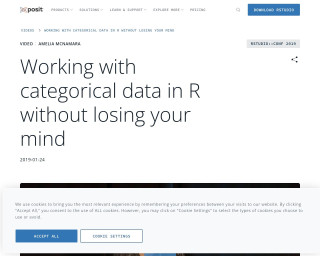
Working with categorical data in R without losing your mind
Working with categorical data in R without losing your mind - This talk outlines common problems arising from categorical variable transformations in R, and shows strategies to avoid them, using both base R and the Tidyverse.
Go to Resource
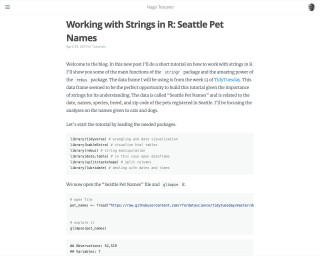
Working with Strings in R: Seattle Pet Names
This is a tutorial on how to work with strings in R using the 'stringr' package and the 'rebus' package. The tutorial uses the 'Seattle Pet Names' dataset from TidyTuesday and focuses on the names given to cats and dogs. It demonstrates the manipulation of strings by removing punctuation and excess white space from the names.
Go to Resource
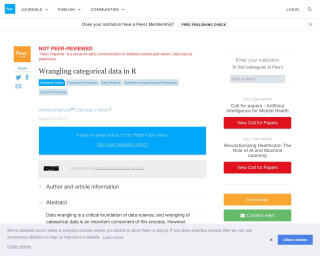
Wrangling categorical data in R
This tutorial is a comprehensive guide on how to wrangle categorical data in R. It covers various techniques and functions to manipulate and analyze categorical data, including recoding, reordering, and summarizing categorical variables. The tutorial also provides step-by-step examples and case studies to illustrate the concepts.
Go to Resource
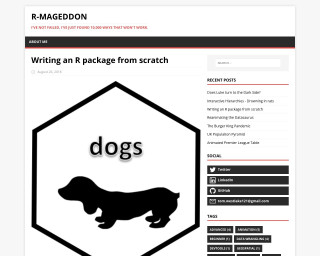
Writing an R package from scratch
This tutorial provides a step-by-step guide on how to create an R package from scratch using the usethis package. It covers topics such as package setup, adding functions, and function documentation.
Go to Resource